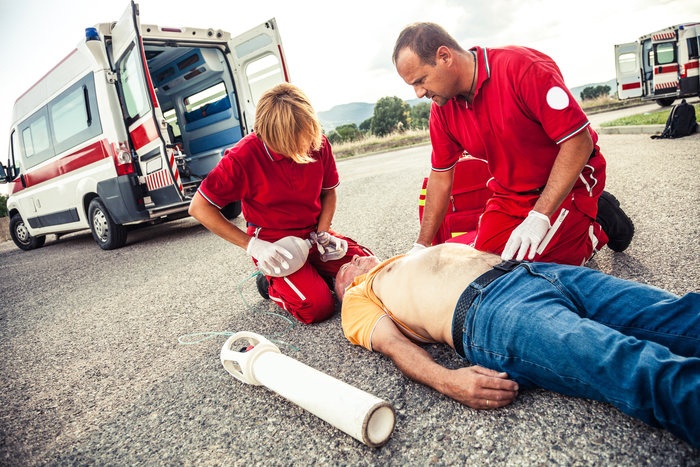
You can tell a lot in the first few seconds of patient contact. Your initial survey begins the moment you step on scene. For example, there’s that “difficulty breathing” call that comes in the wee hours of the morning to an assisted-living residence you’ve responded to on countless occasions.
You enter the home and scan the kitchen, noting the numerous medications scattered across the counter. An overflowing ashtray rests beside the easy chair, and the home is infused with the stench of stale cigarettes.
You hurry down the narrow hallway to the patient’s bedroom and find him, as usual, propped up in bed on a mountain of pillows, his oxygen hose snaking off to where the bottle stands beside the night table.
He’s gasping for breath, and the sound of crackles fills the room. Even if the patient wasn’t a regular, you’d know by the breath sounds that he is suffering from COPD.
Respiratory emergencies have their own distinct calling cards. Not only do they produce distinctive sounds, based on the type of obstruction, but the pattern of respirations can also indicate an underlying condition. So let’s discuss abnormal respiratory patterns and what they indicate in the emergency setting.
The fundamentals of diagnosis
Assessing the type of breath sounds and patterns of respiration is essential to diagnose respiratory emergencies. With your experience as a paramedic, you can quickly distinguish the level of seriousness of each situation. Here are some quick reminders about auscultating breath sounds:
- If possible, have your patient sitting up when you auscultate the chest.
- Have your patient take deep breaths through an open mouth, to improve air movement and lung sounds.
- Place the diaphragm of the stethoscope against bare skin, not on clothing.
- Document your baseline findings, so that they can be compared to subsequent assessments.
Sounds matter
Abnormal, or adventitious, breath sounds often indicate underlying conditions. With practice and experience, the various types of abnormal sounds can be quickly identified, expediting your diagnoses. Here are the most common:
- Wheezes: high-pitched continuous sounds indicating a constricted airway, typically heard associated with asthma attacks
- Rhonchi: continuous low-pitched sounds associated with mucus in the airway
- Stridor: a loud, high-pitched sound, often called “seal bark” that often accompanies infection, swelling, trauma, disease, or a foreign body above the glottic opening
- Crackles: also known as rales, these discontinuous sounds are heard as mucus or fluid is moved through the airways; also heard when collapsed airways or alveoli pop open
Abnormal Patterns
A normal breathing rate, also called eupnea, depends on the age of the patient. Normal rates for adults are typically between 12 and 20 respirations per minute. Rates among adolescents can also range from 12 to 20 breaths, depending on age and size, and among newborns, the range is from 30 to 50. Now, let’s quickly discuss the various types of abnormal respiratory rates and patterns and what they indicate in your patient:
- Bradypnea: an abnormally slow rate of respiration can be normal during sleep but can be dangerous when oxygenation is compromised, such as in drug or alcohol ingestion, central nervous system lesions (both traumatic and non-traumatic), metabolic disorders, and pediatrics fatigued by increased work of breathing
- Apnea: the absence of respirations, typically lasting more than 15 seconds
- Kussmaul’s respirations: fast and deep labored breathing, often punctuated by sighs, common in conditions of metabolic acidosis such as diabetic ketoacidosis
- Cheyne–Stokes: a cyclical pattern of breathing that includes a progression of increased rate and depth of respirations followed by periods of apnea; associated with drug overdose, acidosis, and increased intracranial pressure
- Apneustic breathing: prolonged periods of gasping inspiration followed by brief, ineffective expiration at a rate of 1 to 2 breaths per minute; if not corrected, it can quickly lead to death
- Hyperventilation: an increased rate and depth of respirations (typically between 20 and 30 per minute), resulting from anxiety, fever, exertion, acid–base imbalance, or damage to the midbrain
- Agonal respirations: often seen in near-dead patients; an abnormal pattern that can be slow, shallow, deep, or gasping
Knowing the abnormal rates and patterns of respirations is just as important as knowing the normal rates and patterns and will help pinpoint the underlying cause of respiratory emergencies.
Editor's Note: This blog was originally published January 2022 and has since been updated with new content.















